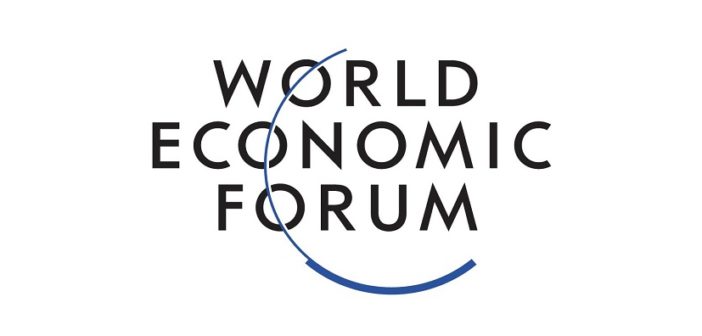
- Cyberattacks are one of the top 10 risks of highest concern for the next decade estimated to cost $90 trillion, according to the World Economic Forum Global Risk Report 2019.
- World Economic Forum releases the first guide to help C-suite executives counter threats in ten steps regardless of technical-expertise
- Read the report
Cyberattacks are one of the top 10 global risks of highest concern in the next decade, with an estimated price tag of $90 trillion if cybersecurity efforts do not keep pace with technological change. While there is abundant guidance in the cybersecurity community, the application of prescribed action continues to fall short of what is required to ensure effective defence against cyberattacks. The challenges created by accelerating technological innovation have reached new levels of complexity and scale – today responsibility for cybersecurity in organizations is no longer one Chief Security Officer’s job, it involves everyone.
The Cybersecurity Guide for Leaders in Today’s Digital World was developed by the World Economic Forum Centre for Cyber Security and several of its partners to assist the growing number of C-suite executives responsible for setting and implementing the strategy and governance of cybersecurity and resilience. The guide bridges the gap between leaders with and without technical backgrounds. Following almost one year of research, it outlines 10 tenets that describe how cyber resilience in the digital age can be formed through effective leadership and design.
“With effective cyber-risk management, business executives can achieve smarter, faster and more connected futures, driving business growth,” said Georges DeMoura, Head of Industry Solutions, Centre for Cybersecurity, World Economic Forum. “From the steps necessary to think more like a business leader and develop better standards of cyber hygiene, through to the essential elements of crisis management, the report offers an excellent cybersecurity playbook for leaders in public and private sectors.”
“Practicing good cybersecurity is everyone’s responsibility, even if you don’t have the word “security” in your job title,” said Paige H. Adams, Global Chief Information Security Officer, Zurich Insurance Group. “This report provides a practical guide with ten basic tenets for business leaders to incorporate into their company’s day-to-day operations. Diligent application of these tenets and making them a part of your corporate culture will go a long way toward reducing risk and increasing cyber resilience.”
The Ten Tenets:
- Think Like a Business Leader – Cybersecurity leaders are business leaders first and foremost. They have to position themselves, teams and operations as business enablers. Transforming cybersecurity from a support function into a business-enabling function requires a broader view and a stronger communication skill set than was required previously.
- Foster Internal and External Partnerships – Cybersecurity is a team sport. Today, information security teams need to partner with many internal groups and develop a shared vision, objectives and KPIs to ensure that timelines are met while delivering a highly secure and usable product to customers.
- Build and Practice Strong Cyber Hygiene – Five core security principles are crucial: a clear understanding of the data supply chain, a strong patching strategy, organization-wide authentication, a secure active directory of contacts, and encrypted critical business processes.
- Protect Access to Mission-Critical Assets – Not all user access is created equal. It is essential to have strong processes and automated systems in place to ensure appropriate access rights and approval mechanisms.
- Protect Your Email Domain Against Phishing – Email is the most common point of entry for cyber attackers, with the median company receiving over 90% of their detected malware via this channel. The guide highlights six ways to protect employees’ emails.
- Apply a Zero-Trust Approach to Securing Your Supply Chain – The high velocity of new applications developed alongside the adoption of open source and cloud platforms is unprecedented. Security-by-design practices must be embedded in the full lifecycle of the project.
- Prevent, Monitor and Respond to Cyber Threats – The question is not if, but when a significant breach will occur. How well a company manages this inevitability is ultimately critical. Threat intelligence teams should perform proactive hunts throughout the organization’s infrastructure and keep the detection teams up to date on the latest trends.
- Develop and Practice a Comprehensive Crisis Management Plan – Many organizations focus primarily on how to prevent and defend while not focusing enough on institutionalizing the playbook of crisis management. The guide outlines 12 vital components any company’s crisis plan should incorporate.
- Build a Robust Disaster Recovery Plan for Cyberattacks – A disaster recovery and continuity plan must be tailored to security incident scenarios to protect an organization from cyberattacks and to instruct on how to react in case of a data breach. Furthermore, it can reduce the amount of time it takes to identify breaches and restore critical services for the business.
- Create a Culture of Cybersecurity – Keeping an organization secure is every employee’s job. Tailoring trainings, incentivizing employees, building elementary security knowledge and enforcing sanctions on repeat offenders could aid the development of a culture of cybersecurity.
In the Fourth Industrial Revolution, all businesses are undergoing transformative digitalization of their industries that will open new markets. Cybersecurity leaders need to take a stronger and more strategic leadership role. Inherent to this new role is the imperative to move beyond the role of compliance monitors and enforcers.
The Forum’s Centre for Cybersecurity and its Platform for Cybersecurity and Digital Trust are working with governments, businesses, international organizations and civil society to support the growth of cybersecurity leaders, increase cybersecurity awareness and make cyberspace more trustworthy and secure. From 11-12 November, the Annual Meeting on Cybersecurity will take place at World Economic Forum Headquarters in Geneva, Switzerland. It will bring together about 150 experts from more than 30 countries under the theme: Enabling Leadership for a Secure Digital Future.





